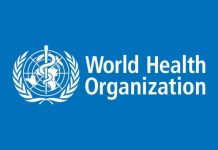Although considered rare, the rate of diagnosis of ectopic pregnancy keeps increasing, showing an increasing need for pharmacists to get involved in its management. To effectively do this, we need to understand the condition properly as well as the current trends in its management.
According to scientific reports, ectopic pregnancy is one of the leading causes of the removal of the fallopian tubes and it accounts for about 3-4 per cent of all pregnancy-related deaths. About 2 in 100 pregnancies are ectopic, occurring largely in women aged 35—44. In a recent study carried out by Nigerian physicians and published in the Nigerian Postgraduate Medical Journal, it was reported that ectopic pregnancy accounted for about 5.2 percent of all maternal deaths that occurred at the Lagos University Teaching Hospital between 2002-2006 with an increase in occurrence of ectopic pregnancy from 1.81/100 of all deliveries in 2005 to 2.89/100 of all deliveries in 2014. If not treated promptly and adequately, ectopic pregnancy could easily become life-threatening with documented complications like rupture of the fallopian tubes or associated organ, bleeding, blood loss, shock and ultimately death.
Also called extra-uterine pregnancy, ectopic pregnancy refers to a situation whereby a fertilized egg is implanted outside the uterus. Typically, it occurs in the fallopian tubes (tubal pregnancy), a study published in the Annals of Medical Sciences and Research states that tubal pregnancy accounts for about 95 per cent of all ectopic pregnancy cases. However, ectopic pregnancy has also been reported to occur in the ovaries, abdominal cavity and even the cervix.
Despite this, when diagnosed early, ectopic pregnancy can be treated with certain medications which lower the propensity for complications and reduce the need for surgery as stated in a publication on ectopic pregnancy on Medscape.
It has been established through medical research that ectopic pregnancy occurs when there is an obstruction as the fertilized egg journeys into the uterus. Risk factors that can increase one’s chances of getting ectopic pregnancy have also been identified and shown to include: Pelvic inflammatory disease (PID), structural abnormalities in the fallopian tubes, endometriosis, sexually transmitted diseases (STDs), previous ectopic pregnancies, history of multiple sexual partners, smoking, increasing age, people who got pregnant despite use of contraceptives like intrauterine device or tubular litigation as well as contraceptives containing progestins only as well as people who got pregnant with use of fertility aids (drugs, procedures) amongst others has been stated in several publications including one by Dr Vanitha Sivalingam, a clinical lecturer at University of Manchester and her team, published in BMJ Sexual and Reproductive Health.

The classical signs (triad) of ectopic pregnancy have been stated by physicians to be: vaginal bleeding, pain that occurs in the lower abdomen, pelvis and/or lower back and Amenorrhea. However, only about half of all patients have been reported to show all three signs. Other symptoms to watch out for according to reports include: dizziness, syncope, vomiting, malaise, nausea and other symptoms similar to those of pregnancy. Severe tenderness, abdominal rigidity, rectal pressure, and hemodynamic shock have also been identified to typically suggest a case of emergency.
In the management of ectopic pregnancy, early detection has been shown to be very vital. Diagnosis by physicians is typically done by: i) Measuring Human Chorionic Gonadotropin (HCG) or progesterone levels ii) Transvaginal ultra sound iii) Laparoscopy (for patients in severe pain or that are hemodynamically unstable).
In normal pregnancy, the HCG levels has been documented to typically double every 2–3 days but a publication on Medscape reports that this is not the case in ectopic pregnancy. It is stated however that it is impossible to diagnose ectopic pregnancy with a single HCG test. Instead, the levels of the hormone are monitored over a few days. In addition, it has been established that a gestational sac is absent in the ultrasound of an ectopic pregnancy whereas it is present in a normal pregnancy.
With advancement in science, ectopic pregnancy can now be appropriately treated with medications if discovered early without rupture and without signs of severe abdomen pain. Methotrexate, a chemotherapeutic agent, used in the treatment of several cancers has been approved for this. This drug has been demonstrated to work by killing the growing zygote, thereby inducing miscarriage. It is contraindicated in one or more of the following: sign of intrauterine pregnancy, rupture of the fallopian tube, patient is breastfeeding, active pulmonary or peptic ulcer, immunodeficiency, moderate to severe anemia, leukopenia, or thrombocytopenia and liver or kidney dysfunction. Regardless, appropriate monitoring is required for methotrexate due to its well documented side effects some of which are renal failure, thrombocytopenia, leukopenia etc.
Surgery is mandated if there is tubal rupture as reported in Dr Sivalingam’s study. It could be done using laparoscopy or laparotomy techniques with the latter reserved for when the former is impossible or difficult to do. Laparoscopy is typically done using several tiny incisions using a laparoscope.
Laparotomy on the other hand, involves use of bigger incisions through which the surgeon can use his hands. Sometimes, removal of one or two of the fallopian tubes has been necessary depending on the extent of damage.
The following steps have been identified to be helpful and are encouraged in the prevention of ectopic pregnancy: i) Practice of safe sex (Usage of condoms and limit of sexual partners), ii) Regular gynaecological appointments.
The quality and extent of pharmacists’ training coupled with an increasing proximity to the community, place them in a good position to offer appropriate help and counselling to the patients before, during and post ectopic pregnancy.
Pharmacists can be involved in patient management by providing awareness on the condition through health education and highlighting the steps that can be taken for prevention.
Since signs and symptoms of ectopic pregnancy may not be noticed until it is too late, it is therefore, imperative that we as pharmacists, identify risk factors and counsel patients appropriately on the need for necessary checks and refer as required particularly in cases of (suspected) emergencies.
Furthermore, on diagnosis, we can offer our expertise on the appropriate therapy particularly in the case of patients that are good candidates for drug therapy. We can also help with subsequent monitoring.
Lastly, it is important to enlighten patients on the possibility of having healthy children after an ectopic pregnancy, even with the removal of a fallopian tube. However, active steps must be taken to prevent recurrence.










